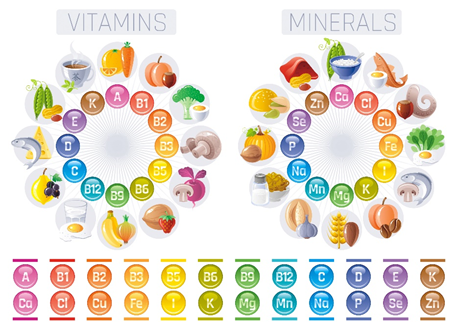
A school PTA can accomplish many things for schools. First and foremost, it can help to boost the morale of teachers and administrators. PTAs can help to foster positive relationships between parents and teachers. Parent-teacher relationships can sometimes be hostile. For example, PTAs can donate supplies to classrooms or award small prizes to teachers. Regardless of the specific function of a PTA, its activities are helpful to teachers and students.
A PTA can bring great benefits to schools. It improves the school's climate, and it brings together parents, teachers, and staff. Strong PTAs are more likely to have high attendance and lower dropouts. This is because parents who are invested in their child's education are more likely to make sure their children attend school. PTAs have many benefits. Here are some of the benefits to joining a school PTA.

A school PTA can support the school by helping to promote important issues in the local community. They can help the school with its curriculum, and other matters. As long as the school has an active PTA, it can help a school improve its reputation. While the pta can be a great asset for a school, it can also cause damage to the education system. The school PTA cannot replace the principal.
The recognition that school PTAs receive is another benefit. Parents can make a difference in the school's culture and get involved. PTAs can also assist students with extra help in school. PTAs had a history of providing more support to schools and students. They were also less influential, making it harder for them to recruit new members. This is because PTA was not recognized in professional organizations, but rather as a volunteer-based group.
PTAs provide a valuable resource for school communities. Its members can help to raise funds for various school activities. They can sponsor fundraising events, help organize school events and even participate in school events. A PTA can become a large organization with the support of all school members. Transparency and honesty about the goals and issues of the PTA are the best ways to build it.

A school's PTA can provide many benefits. PTAs are required to have a webpage explaining their role, responsibilities and how they can be involved. You can sign up for the PTA's social media channels or visit one of their websites. A school pta can also help you become more involved in a school's community. It is a great method to increase parent involvement in schools.
FAQ
What are the 10 best foods to eat?
These are the 10 best foods to try:
-
Avocados
-
Berries
-
Broccoli
-
Cauliflower
-
Eggs
-
Fish
-
Grains
-
Nuts
-
Oats
-
Salmon
How can you tell what is good?
You have to listen to what your body says. Your body is the best judge of how much exercise, food and rest you should get. To avoid overdoing it, it's important that you pay attention to what your body is telling you. Take care of your body and make sure that you're staying healthy.
How often should i exercise?
For a healthy lifestyle, exercise is vital. There is no set time limit for exercising. It is important to find something that you enjoy and stay with it.
If you are working out three times a weeks, aim to do 20-30 minute of moderate intensity. Moderate intensity means that your muscles will continue to work hard even after you finish. This type of exercise burns approximately 300 calories.
You can walk for 10 minutes every day if that is what you prefer. Walking is easy on the joints and has low impact.
Jogging is an alternative to running. You can do it for as little as 15 minutes each day. Running is a great exercise to build muscle tone and burn excess calories.
Start slowly if you aren't used to doing exercise. You can start with only 5 minutes per week of cardio. Gradually increase the duration until you reach your goal.
How much should my body weight be for my height? BMI chart & calculator
To determine how much weight loss you need, a BMI calculator is your best friend. The healthy BMI range for a healthy person is 18.5 to 24.9. You should lose about 10 pounds each month if you are trying to lose weight. Enter your weight and height into the BMI calculator.
To see if you're overweight or obese, check out this BMI chart.
Why should we have a healthy lifestyle to begin with?
Living a healthy lifestyle can help you live longer and more happy lives. Good nutrition, exercise regularly, good sleep habits, stress management and healthy lifestyle can help you avoid heart disease and stroke.
Healthy lifestyles will help us to cope with daily stresses better and improve our mental health. Healthy lifestyles will increase self confidence, and make us look and feel older.
Get immune enhancement with herbs and supplements
It is possible to boost immune function by using herbs and natural remedies. Some common examples include garlic, ginger, oregano oil, echinacea, ginkgo biloba, and vitamin C.
These herbs should not be considered as a substitute for conventional medical treatment. Side effects can include nausea, dizziness, stomach cramps and dizziness.
Which lifestyle is best for your health?
Healthy lifestyles include eating healthy food, regular exercise, good sleep, and avoiding stress. This will ensure that you live a long healthy life.
It's easy to start small with your exercise and diet. For example, if you want to lose weight, try walking for 30 minutes every day. If you're looking for a way to increase your activity, consider taking up swimming or dancing. You could also join an online fitness program like Fitbit or Strava that tracks your activity levels.
Statistics
- This article received 11 testimonials and 86% of readers who voted found it helpful, earning it our reader-approved status. (wikihow.com)
- In both adults and children, the intake of free sugars should be reduced to less than 10% of total energy intake. (who.int)
- According to the Physical Activity Guidelines for Americans, we should strive for at least 150 minutes of moderate intensity activity each week (54Trusted Source Smoking, harmful use of drugs, and alcohol abuse can all seriously negatively affect your health. (healthline.com)
- According to the 2020 Dietary Guidelines for Americans, a balanced diet high in fruits and vegetables, lean protein, low-fat dairy and whole grains is needed for optimal energy. (mayoclinichealthsystem.org)
External Links
How To
What does "vitamin" actually mean?
Vitamins are organic compounds that can be found in foods. Vitamins allow us to absorb nutrients from food. Vitamins cannot be produced by the body. They must be acquired from food.
There are two types of vitamins: water soluble and fat soluble. Water soluble vitamins dissolve easily in water. Vitamin C,B1(thiamine), B2 (2riboflavin), and B3 (3niacin), as well as vitamin C,B1, B2 (riboflavin), and B3 (niacin), vitamin B6 (pyridoxine), vitamin folic acid (biotin), pantothenic, and choline are examples. Fat soluble vitamins are stored in the liver and fatty tissue. Some examples include vitamin D and E, K, A and beta carotene.
Vitamins are classified based on their biological activity. There are eight major vitamin groups:
-
A - vital for healthy growth.
-
C - essential for nerve function and energy generation.
-
D - Essential for healthy teeth and bones.
-
E - needed for good vision and reproduction.
-
K - Required for healthy nerves and muscles.
-
P - essential for strong bones, teeth and tendons
-
Q - Aids digestion and iron absorption
-
R - Red blood cells are made from red blood cells.
The recommended daily intake (RDA), of vitamins varies with age, gender and physical condition. The U.S. Food and Drug Administration sets RDA values.
For adults 19 years and over, the RDA of vitamin A is 400mg per day. Pregnant mothers need 600 micrograms per days because it is vital for the development and growth of their baby. Children ages 1-8 require 900 micrograms per day. Children under 1 year old require 700 micrograms daily, while infants over one year old need 500 micrograms every day. This decreases between 9 and 12 months.
Children aged between 1-18 years require 800 micrograms of sugar per day, while overweight children need 1000 micrograms. Children who are underweight receive 1200 micrograms every day to meet their nutritional requirements.
Children 4-8 years old who have anemia must consume 2200 micrograms of Vitamin C daily.
2000 micrograms is the minimum daily intake for adults over 50 years old to maintain good health. Due to their increased nutrient needs, pregnant and breastfeeding women need 3000 micrograms daily.
Adults over 70 require 1500 micrograms each day, since they lose around 10% of their muscle mass every decade.
Women who are pregnant and lactating need more nutrients than the RDA. Pregnant mothers need 4000 micrograms per daily during pregnancy and 2500 after giving birth. Breastfeeding mothers need 5000 micrograms per day when breast milk is being produced.